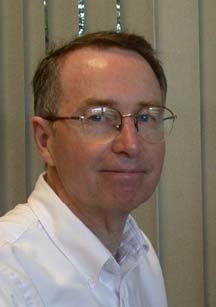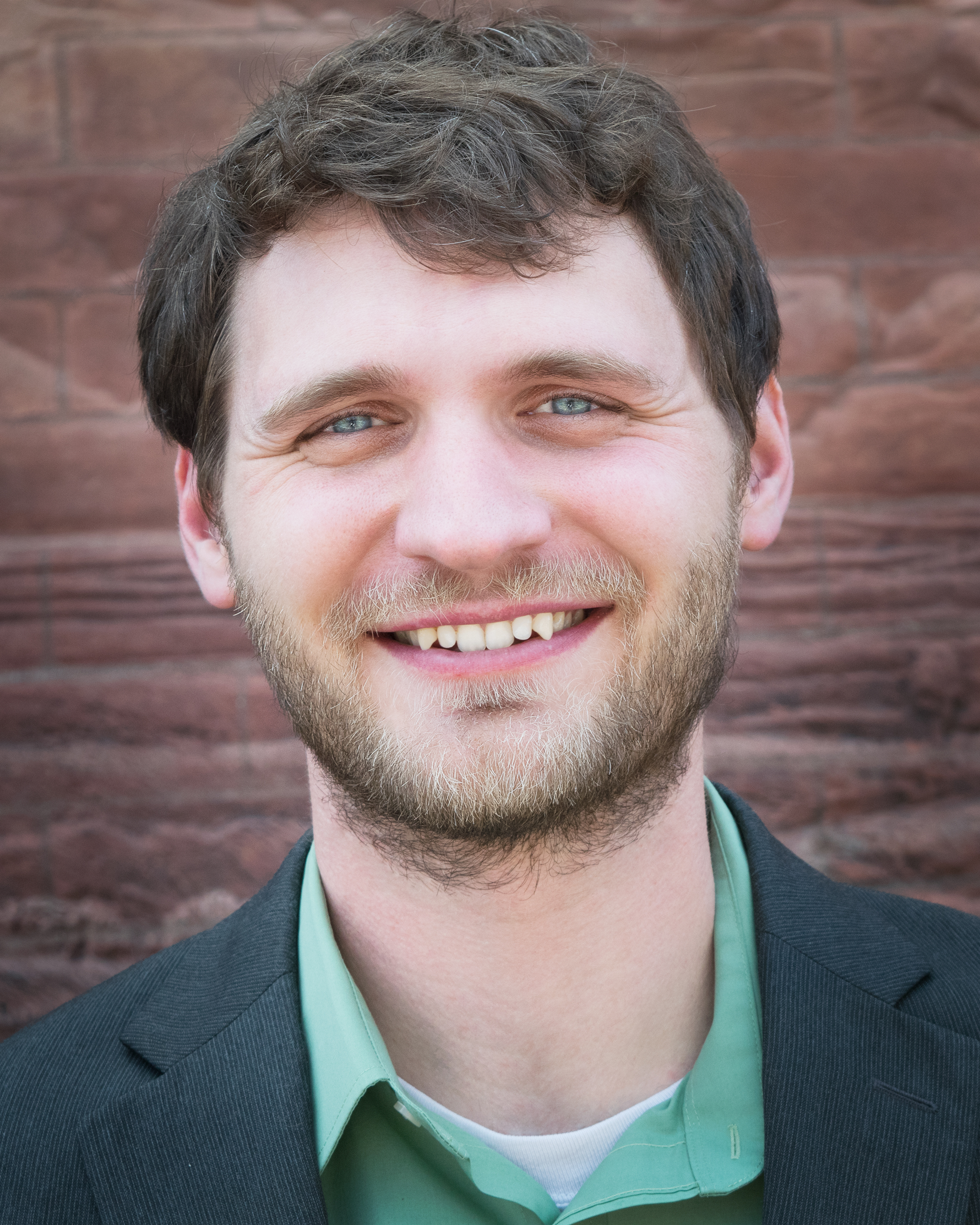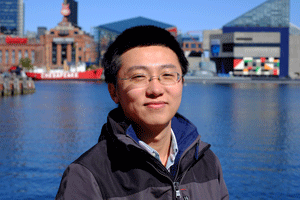May 2015 Newsletter: Volume 2, Issue 2
A Message From the Director, Jian-Ping Wang
Welcome, everyone to the 6th C-SPIN Quarterly Newsletter.
First, I would like to congratulate Prof. Chia-Ling Chien for his prestigious 2015 Magnetism Award and Néel Medal from the Commission on Magnetism within the International Union of Pure and Applied Physics. Prof. Chien joins a distinguished group of prior recipients that includes spintronic materials pioneer Stuart Parkin, UC Berkeley Chancellor Emeritus Robert Birgeneau, and Nobel Laureates Albert Fert and Peter Grünberg. Prof. Chien has been one of the major driving forces within C-SPIN for finding a practical application of voltage-controlled magnetic anisotropy and magnetism.
Second, I feel sad to announce that Prof. Bill Butler will retire this summer. Bill has been instrumental in the development of C-SPIN, especially in his discovery of several key Heusler alloys that are currently being made and tested by other C-SPIN PIs. More details about Prof. Butler's career and C-SPIN work can be found below.
Third, I want to share that I had an excellent visit to GlobalFoundries Singapore. I enjoyed my discussions with the company's front-line research and engineering development team and was impressed by their strong motivation, interest and strong knowledge of spintronics materials and devices. I am glad to see that more follow-up discussions are being arranged between GlobalFoundries scientists and C-SPIN PIs.
Fourth, my co-Directors and I have had several productive meetings with SRC regarding the 2.5 year realignment. As of this time, however, plans and budgets are not yet finalized. We will communicate the final 2.5 year plan as soon as we know it – hopefully, at the midterm review. Speaking of which…
C-SPIN will have its 2nd internal midterm review May 5 and 6 at the University of Minnesota. This meeting provides PIs with the opportunity to critically examine the current status and progress of C-SPIN research. All STARnet sponsors and C-SPIN industry associates will get a copy of the presented materials. I’m looking forward to seeing all of the PIs then.
 Prof. William Butler
Prof. William ButlerBill Butler Announces Retirement
An Unalloyed Legacy
“I won’t miss faculty meetings,” said Bill Butler when asked about his upcoming retirement. “And I look forward to study topics that have been on my mind but I haven’t had time to study.”
Officially, Butler will finish his last class at the University of Alabama this month and move to Colorado with his wife to be closer to his grandchildren. Unofficially, he will be working full time throughout the summer. “I have to make sure my post-docs and grad students are taken care of, I’ve got a large stack of papers that need to be readied for publication, and there’s still a lot of data to be crunched on Heusler alloys for C-SPIN,” explains Butler.
Butler’s journey as a scientist began at Auburn University in Alabama, where he graduated with honors in Physics in 1964. He went to the University of California- San Diego for graduate school, returned to Auburn to teach for three years, then spent twenty-nine years as a research scientist at Oak Ridge National Laboratory in Tennessee. The opportunity to return home and develop his own lab led to his current position as Professor of Physics at the University of Alabama. Since he began at the University in 2001, he has also directed the University’s Center for Materials Information Technology and its Materials Research Science and Engineering Center.
As he noted in a Q&A last year, his work in transition metals, alloy theory, and transport theory took on new significance when GMR was discovered in 1988. As his post-1990 publication list suggests, the need to characterize magnetic materials – theoretically and experimentally – gave Butler and his groups an endless supply of work. His work on MgO, in fact, laid the foundation for the computer industry’s hard drive storage revolution that began in 2007.
Butler’s involvement in C-SPIN was a natural outgrowth of his work on magnetic materials. “Jian-Ping Wang, Randall Victora, and I knew each other through common interest in spintronics and the annual Information Storage Industry Consortium meeting,” says Butler. “When Jian-Ping told me about C-SPIN, I was impressed with the ambitiousness of his vision and – to be honest – the secure funding that would enable me to continue working on spintronic materials, especially Heusler alloys. I also knew that the Center would significantly accelerate collaboration and research progress.”
Since the Center began in 2013, Butler has focused almost exclusively on developing theoretical models for Heusler alloys. “We need to predict which ones will be stable and have perpendicular magnetic anisotropy – or, at least, be capable of having perpendicular magnetic anisotropy,” says Butler. “There are many hundreds of candidates, but our calculations have considerably pared down the list. We have about six that C-SPIN can make and test, and I hope to have another six or so by the end of the summer.”
Butler has also contributed to C-SPIN by developing theoretical predictions for Heusler alloys that can be used for injecting spin into spin channels. And he thinks that, in some ways, the work on Heusler alloys for spintronics has just begun. “We’ve also discovered that layering Heusler alloys can lead to all kinds of interesting and beneficial properties from a spintronics point of view, and we’ve just started understanding this.”
Butler plans to stay informed about C-SPIN’s research. “We still haven’t found the best Heusler alloy, so I’m curious to know the results of the Center’s experimental research,” he says. “I want to stay on top of promising spintronic interface research, and of course, I’ll always be available for a phone call.”
Registration for "Heusler Alloys for Spintronic Devices"
Registration is now open for the upcoming workshop “Heusler Alloys for Spintronic Devices,” to be held at the University of Minnesota in Minneapolis, Minnesota, July 30 – 31, 2015. There is no fee for registration, and all STARnet members and SRC industry associates are invited to attend the workshop. We welcome the participation of postdocs and graduate students. The workshop will be organized by C-SPIN.
Please visit the workshop website to REGISTER. Registration closes May 24th.
Materials with 100% spin polarization and high perpendicular magneto crystalline anisotropy have been the ideal for next generation spintronic memory and logic devices. Heusler alloys are a candidate for such materials and have been extensively studied over the past decade. There have been some promising results, but many roadblocks remain. This workshop will candidly discuss these promises and challenges by bringing together leading experts working in this field. To this end we expect to have around 10-15 talks over 1.5 days along with time dedicated to discussions.
Please visit the workshop website for more details and a list of invited speakers. Questions regarding the workshop can be directed to Marie L. Rahne at: heusler (AT) umn.edu.
Student and Post-Doc Profiles
 Will Echtenkamp
Will EchtenkampWill Echtenkamp
PhD Candidate at the University of Nebraska-Lincoln
I am currently working on an all-thin-film voltage-controlled magnetic tunnel junction (MTJ) with Christian Binek for Theme 1. More specifically, we are developing the major building block for the voltage control of the magnetic state variable in the MTJ stack. This foundational device is a thin-film magnetic heterostructure with voltage-controlled exchange bias, made possible by exchange coupling a perpendicular magnetic thin film with a magnetoelectric chromium oxide thin film. By applying a voltage across the chromium oxide, we can potentially switch the exchange bias of the magnetic thin film in the absence of dissipative electric current. Such a device can function as an ultra-low power, non-volatile building block for spin memory and logic devices.
I have also studied the exchange bias training that results from a boundary magnetization of chromium oxide that is incommensurate with the underlying bulk spin structure (see this publication); the scaling of the magnetoelectric effect in chromium oxide thin films (see this publication); and, with my colleague Mike Street, increasing the Néel temperature of chromium oxide by boron doping, which could go a long ways toward improving spintronic devices (see this publication).
Thin film heterostructures are fascinating for two reasons. First, changing the size of a well-known, well characterized material leads to a change in properties – in some cases, substantial change. Second, when you take two such films and put them on top of each other, what you get is more than the sum of the parts. For example, you can get emergent interface properties which lead to unexpected and exciting new behavior. It is virtually guaranteed that some form of emergent interface effect, if not voltage-controlled magnetization reversal, will play a major role in future post-CMOS electronics.
I hope that my work on voltage-controlled magnetism in magnetoelectric thin film heterostructures contributes to the field of spintronics in some significant way. Being a part of a team that creates a viable spin-based computing system would be very rewarding.
 Yufan Li
Yufan LiYufan Li
Postdoctoral Associate at Johns Hopkins University
I am currently working on the thin films of SmB6, a promising candidate for a correlated topological insulator (TI). In contrast to Bi-based TI films which can only be prepared by MBE, SmB6 can be grown by industry-compatible techniques such as sputtering. This work, which is essentially an effort to explore new materials for spintronic devices, serves both Theme 1 and Theme 4. I am also working on spin caloritronics and spin-orbit torque switching with PMA materials.
I have also studied the anomalous Hall effect and magnetic skyrmions. I have six publications related to these topics and two pending publications for research related to C-SPIN.
I got started in spintronics while trying to resolve a decades-long controversy about the origin of the anomalous Hall effect, which is rooted in the fundamental physical principle of spin-orbit coupling. I found that spin-orbit coupling, simple and basic as it is, gives rise to many more versatile phenomena, such as skyrmion spin textures and topological surface states. I have been passionate in synthesizing new materials that take advantage of those novel physical properties.
I find it fascinating that the material world can be shaped by an understanding of basic physical laws. I will always be intrigued by the versatile functionalities of novel materials and new physics. I expect my career to involve exploring new physical properties which can be used to bridge the gap between fundamental research and industry needs.


